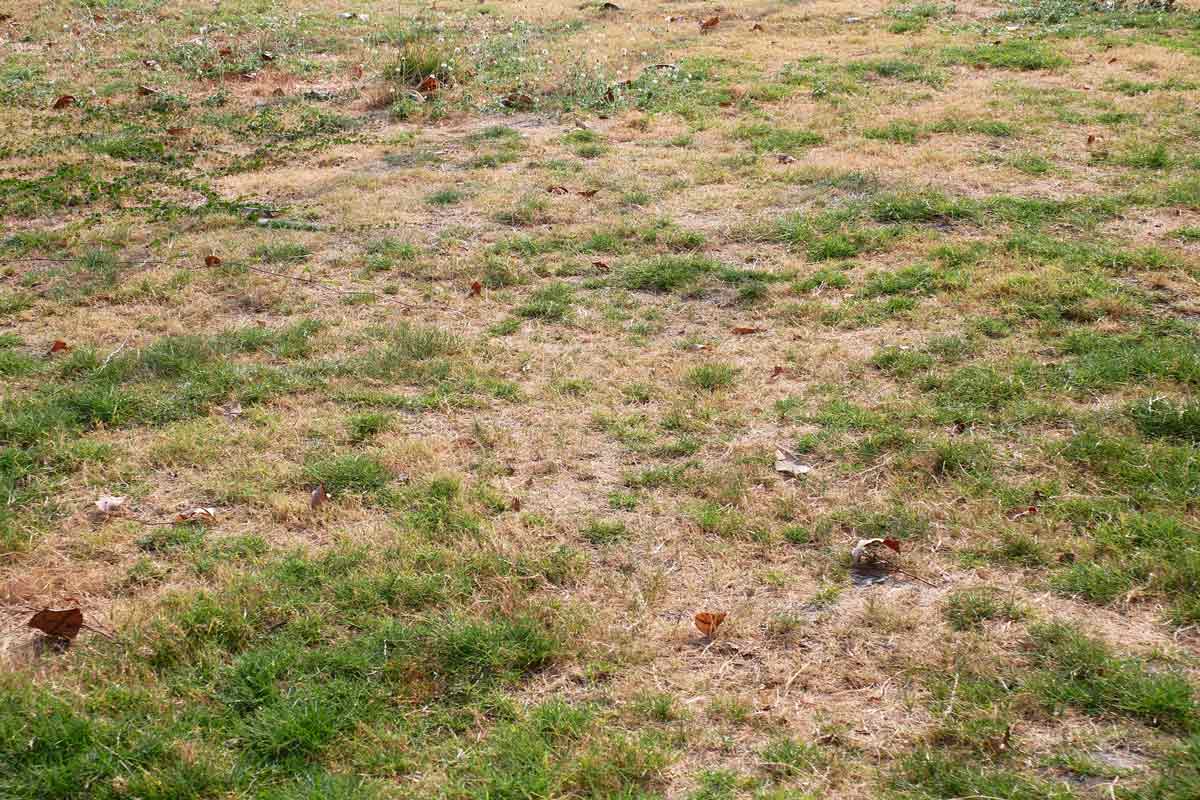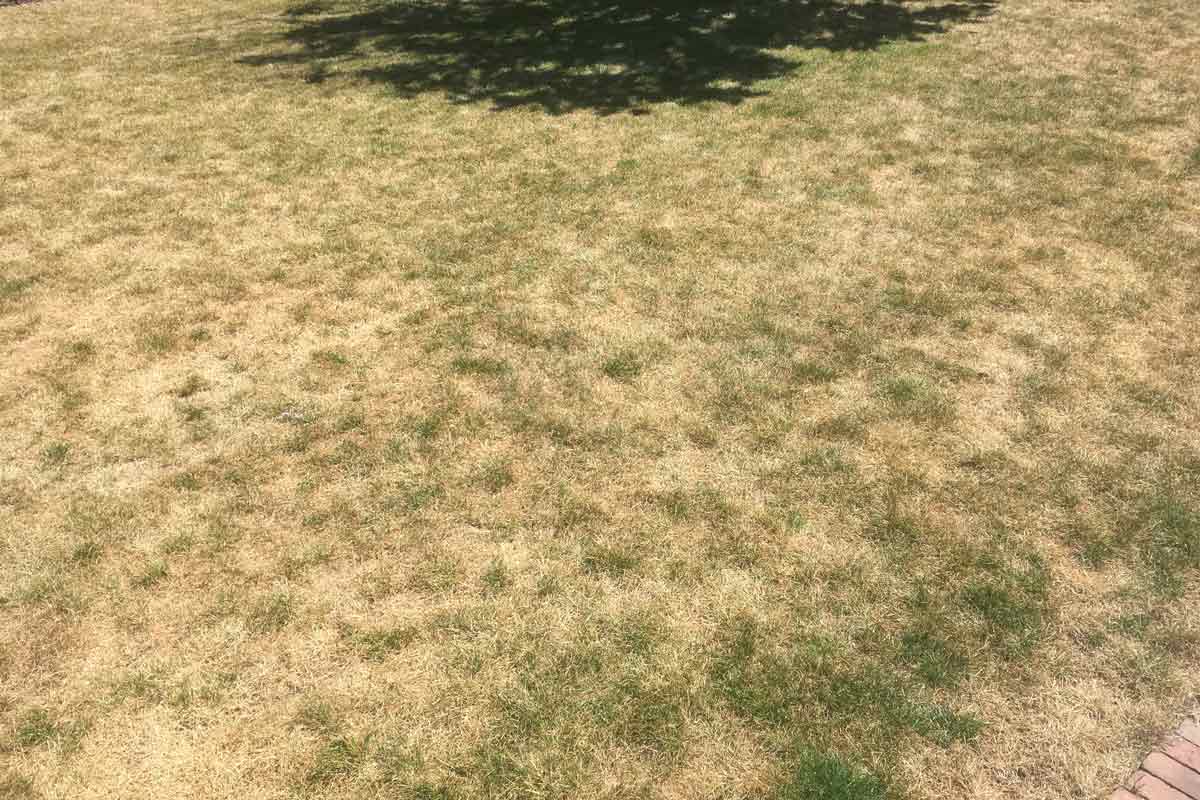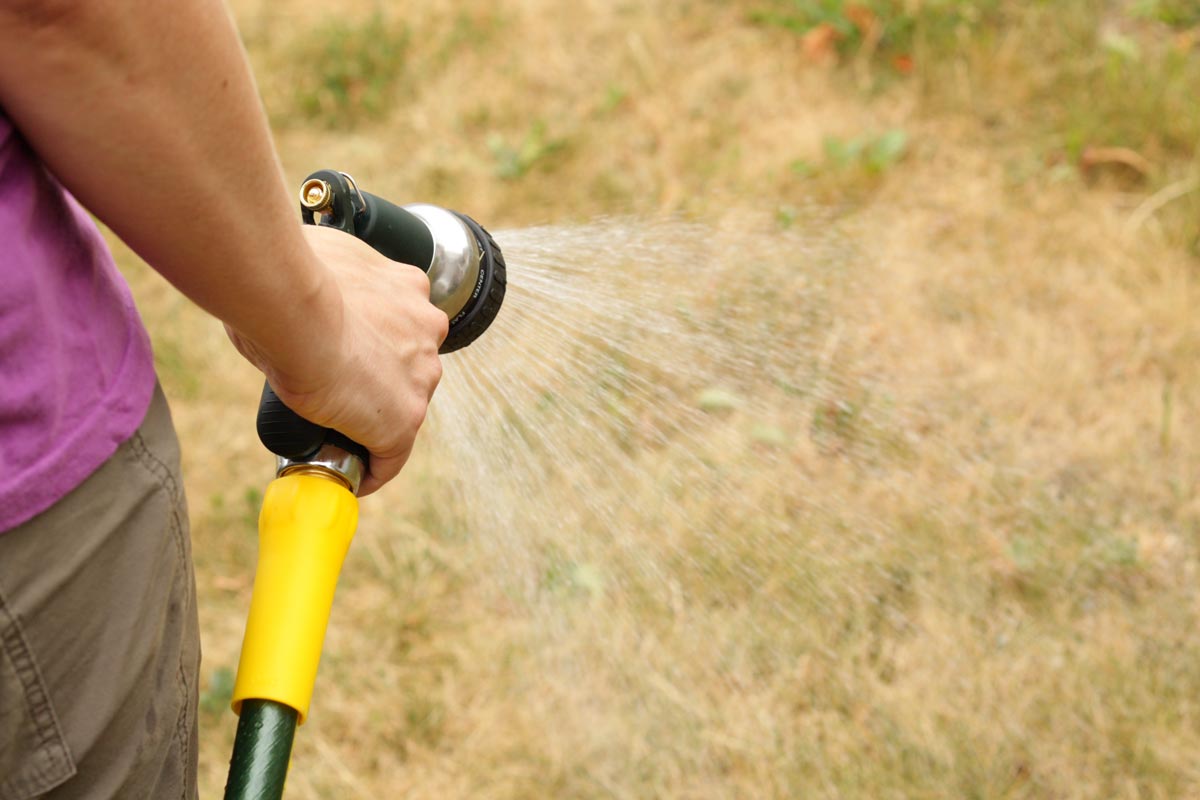
 Though they may have the same straw-like texture, dead and dormant grasses should respond differently when given a tug.
Though they may have the same straw-like texture, dead and dormant grasses should respond differently when given a tug.
fotoDuets / iStock / Getty Images Plus
It’s late in the summer and you arrive home from vacation to find that the cool-season grass in your lawn is browning and no longer growing. What’s going on? After a quick internet search to help you determine what to do, you feel more confused than when you started: half of the articles say that your grass is dormant and needs a quick tune up; the other half claim that your grass is dead and needs a complete overhaul.
How can you know which is really the case?
Dead vs. Dormant
When it comes to determining the true state of your browning cool-season grass, it is important to first know the difference between dead grass and dormant grass.
Dead grass appears brown and lifeless, no longer holding the green color or upright posture of healthy grass. Because it is dead, this grass can not be revived or brought back to health.
Appearing almost exactly the same as dead grass is dormant grass. Dormancy is a protective mechanism that allows cool-season grasses to conserve nutrients and energy in order to survive the heat of the summer. Rather than use nutrients and energy to stay green and lush, dormant grasses use these resources to keep roots alive. Grass that is in a state of dormancy can live for several weeks before it is no longer viable and begins to die.
The biggest difference between these two grass states is that dormant grass can be revived. For cool-season grasses, this usually occurs naturally once the seasons change and the weather cools, but waiting for that to happen can be hard on you and your lawn, as you don’t know whether you are caring for a dead lawn or a dormant lawn. Luckily though, there are a few ways to determine the state of your brown grass that don’t require potentially harmful waiting.
3 Ways to Determine the State of Your Grass
- Note how the lawn is browning.
 The patchy browning of this grass is likely due to something that has killed the grass, rather than a state of dormancy.
The patchy browning of this grass is likely due to something that has killed the grass, rather than a state of dormancy.
Supersmario / iStock / Getty Images Plus
 The relatively even browning of this lawn signals that it is likely a result of dormancy.
The relatively even browning of this lawn signals that it is likely a result of dormancy.
Belgium / iStock / Getty Images Plus
When a lawn goes dormant, it generally happens in a uniform manner. Unless the dormant state is a result of a section not receiving as much watering or sun as other sections of the lawn, dormant grass usually does not occur in patchy or inconsistent sections. If your lawn has these patches or spots, yet all areas are being given the same nutrients, the browning is more likely a result of dead grass that could be caused by disease, damaging insects, pet urine, or a host of wear and tear issues (yes, that includes the brown spot left by your kiddie pool).
If your lawn is uniformly brown, you will need to take further steps to determine whether it is dead or dormant.
- Do a tug test.
Once you determine that your browning grass is not a result of disease or insect damage, you can begin to try other tactics to determine its state. One of these tactics is a tug test. To perform a tug test, simply pull a handful of grass from your turf. If the grass is easily removed from the ground, it is dead; if the grass has some resistance, it is likely in a dormant state.
- Water the lawn.
When a grass goes dormant, it is often because it is not receiving enough water or nutrients. To determine if this is the case, give your lawn some extra water for a few days, in addition to the standard 1-2 inches each week, and observe how the grass reacts. If the grass greens up and appears to gain some life back, you can determine that it was just dormant. If the grass does not change and remains lifeless, you can likely determine that it is dead.
 Some homeowners prefer a dormant lawn, as the lowered maintenance and decreased watering saves lots of time money during the summer months.
Some homeowners prefer a dormant lawn, as the lowered maintenance and decreased watering saves lots of time money during the summer months.
RobMattingley / iStock / Getty Images Plus
If you find that your browning summer lawn is a result of dormant grass, it is important to change your lawn care practices to meet the needs of your grass’s current state.
Caring for Dormant Grass
A lawn in a state of dormancy is much more susceptible to damage than one that is lively and growing. This means that your priority in caring for a dormant lawn should be protection. To protect your dormant lawn follow these practices:
- Reduce foot traffic
- Mow only as needed
- Water just enough to keep grass alive (half an inch every two weeks)
- Avoid fertilizing
- Remove weeds by hand or spot treat with herbicides
If your lawn stays in a dormant state for more than four weeks, first attempt to rehydrate the grass. To rehydrate, water your lawn so that the soil is wet all the way down to a five inch depth. While this will not likely green up the grass, it will keep it alive until better conditions return.
If you feel that your lawn is beyond repair, first give Turf Nurture Natural Base Fertilizer for Lawn Restoration a try. With a specialized fertilizer formula, Turf Nurture is prescription lawn therapy for any lawn that needs a second chance.
And finally, if you find that your lawn needs a complete overhaul, be sure to replant with a high quality grass seed. You can find the perfect cool-season grass variety for your lawn with GreenView Fairway Formula Grass Seed Mixtures and Blends, featuring eight different grass seed blends that never include any wasteful fillers or coatings.